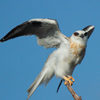|
Well
yes a fair point. The GBS Report discusses this and has a bit both ways,
especially the bits in bold from this extract:
Red Wattlebird Anthochaera
carunculata
Our
most conspicuous honeyeater, it is noisy, bold, active and aggressive.
This species being a resident and the largest and most
rambunctious honeyeater, may take over a site that provides a rich food supply
and exclude other species. It is among the most recorded species in the count
and the breeding list. It is common all year. Over the years
the monthly pattern has changed, with a reduced
seasonal variation. The same happened with the Noisy Miner. For
the first seven years seasonal variation was marked, with a strong
autumn to winter peak and a summer minimum, then the next about eight
years the extent of this seasonal pattern was
reduced. ........
During migration, groups of up to 50 may be observed.
The COG Atlas reports results as
similar. Clearly the species
is present all year but some
migrate in or out of the suburban area
certainly or even within or maybe
to or from
places outside the COG area of interest.
Philip
There is a banksia tree in Wanniassa that commences flowering
in autumn, and flowers through winter. A couple of red wattlebirds have
lived permanently near that tree since I moved in in 1998. Other RWBs are
to be found nearby all the year round also. I am surprised to hear they
are migratory.
Margaret Leggoe
Canberra
Australia

| 
